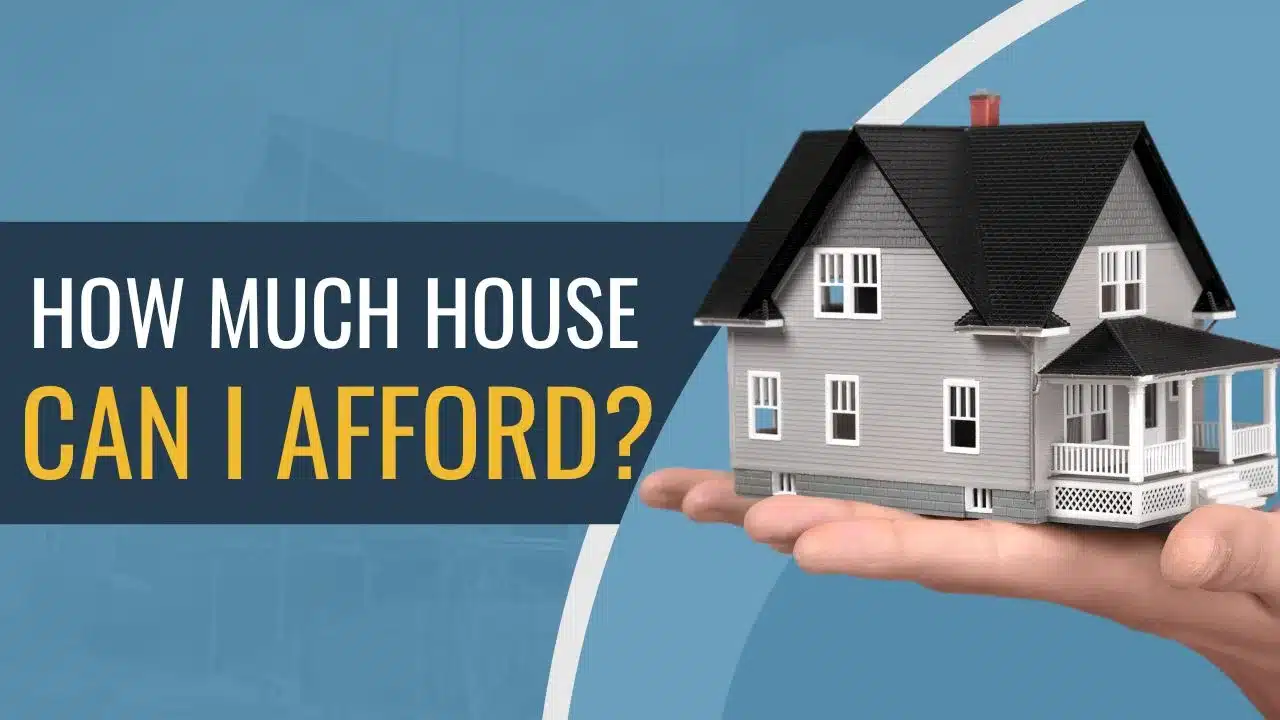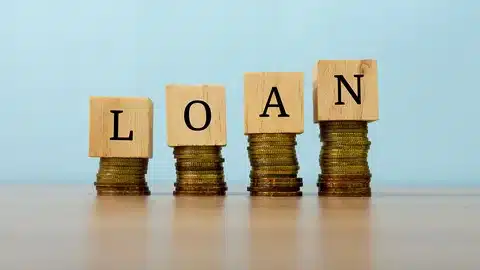How Much House Can I Afford?
When it comes to buying a home, one of the first questions you might ask is, “How much house can I afford?” Understanding your financial limits before starting your house hunting can save you a lot of time and prevent potential disappointments. It’s crucial to approach this question with a clear view of your financial health, considering not only the price of the house but also the ongoing costs associated with homeownership.
Many potential homeowners start by looking at the market to see what homes are available, but a smarter approach is to first assess how much you can comfortably spend without straining your finances. This involves looking at your income, debts, credit score, and mortgage market conditions. The goal is to get a realistic picture of what you can afford so that you can target your search accordingly and secure a mortgage that fits comfortably within your budget.
Taking these steps ensures that you maintain financial stability while also fulfilling your dream of homeownership. It’s about finding a balance between what you want and what you can realistically afford, taking into account all associated costs—not just the selling price of the house.
Understanding Your Financial Health
Assess Your Income
The first step in determining how much house you can afford is to assess your total income. This includes your base salary, any bonuses, commissions, and additional income sources like investments or side hustles. Lenders typically look at your gross income to calculate how much they are willing to loan you. It’s important to have a stable income history, as lenders use this data to gauge your ability to meet mortgage payments.
A solid rule of thumb is that your monthly mortgage payment should not exceed a certain percentage of your monthly income. Financial experts often recommend keeping this figure around 28%. This means that if you earn $5,000 a month, your mortgage payment should ideally not be more than $1,400. This ratio helps ensure that you can comfortably afford your mortgage while still having enough for other monthly expenses.
Evaluate Your Debts
Equally important is evaluating your existing debts, which can significantly impact the amount you can afford to spend on a house. This includes any credit card debt, car loans, student loans, and other financial obligations. Lenders use your debt-to-income ratio (DTI) to determine your mortgage affordability. This ratio compares your total monthly debt payments to your gross monthly income.
For example, if your monthly income is $5,000 and your combined monthly debts are $1,000, your DTI is 20%. Most lenders prefer a DTI of 36% or less, though some loan programs allow higher ratios. This calculation helps lenders assess your risk level and ensure you’re not taking on more debt than you can handle.
By thoroughly analyzing your income and debts, you’re better prepared to determine what you can realistically afford, reducing the risk of financial stress in the future.
Key Factors in Home Affordability

Debt-to-Income Ratio (DTI)
A crucial metric that lenders use to assess your home affordability is the Debt-to-Income Ratio (DTI). This ratio measures the percentage of your gross monthly income that goes towards paying your monthly debt obligations. For instance, if your monthly income is $5,000 and your monthly debt payments total $1,500, your DTI is 30%. Generally, lenders prefer a DTI ratio of 36% or lower, although some loan programs may allow for a higher DTI.
The DTI is critical because it gives lenders an insight into your financial flexibility by showing how much of your income is already committed to other debts. A lower DTI indicates more available income to afford a mortgage, which can help you qualify for a larger loan or better loan terms.
Credit Score
Your credit score is another vital factor in determining how much house you can afford. It influences the interest rates you are eligible for, which can significantly impact your monthly mortgage payments and the total cost of the loan over time. Higher credit scores typically secure lower interest rates because they indicate to lenders a lower risk of defaulting on the loan.
The difference in interest rates can be substantial. For example, a credit score in the highest range might secure an interest rate that is one to two percentage points lower than a score in the average range. This could mean saving hundreds of dollars on monthly payments and tens of thousands over the life of the mortgage.
Down Payment
The size of your down payment also plays a significant role in home affordability. A larger down payment can reduce your loan amount, lower your mortgage payments, and sometimes, avoid the need for private mortgage insurance (PMI), which lenders require when your down payment is less than 20% of the home’s price.
Putting down a substantial amount can also improve your loan terms, as lenders see you as less risky when you invest more of your own money into the property upfront. For many, saving for a significant down payment is a major hurdle, but various loan programs offer lower down payment options to help buyers enter the housing market.
By understanding these key factors—DTI, credit score, and down payment—you can better prepare for the financial commitment of buying a home and ensure that you choose a mortgage that aligns with your financial goals and capabilities.
How Much House Can I Afford?
Online Calculators
Online mortgage calculators can be invaluable tools when determining how much house you can afford. These calculators allow you to input various financial information, such as income, debts, and down payment, and they provide an estimate of what you might be able to afford. They factor in additional costs like property taxes, homeowners’ insurance, and interest rates to give you a more comprehensive view of potential monthly payments and overall loan costs.
Using these tools helps you play with different scenarios. For example, you can adjust the down payment amount to see how it affects your monthly payments and the total interest paid over the life of the loan. This can guide your saving goals and help you understand the trade-offs between different down payment sizes.
The 25% Rule
Another approach to estimating affordability is the 25% rule, which advises that your monthly mortgage payment should not exceed 25% of your monthly take-home pay. This guideline includes not just the principal and interest, but also property taxes, home insurance, and any homeowners association (HOA) fees. Adhering to this rule ensures that you have sufficient buffer in your budget to manage other expenses without becoming house-poor.
Practical Application
To apply these concepts, start by listing all your monthly income sources and expected monthly debts. Use a reputable online calculator to input these values, along with different down payment scenarios, and see the results. This exercise will provide a clear picture of what price range is realistic under various conditions and help you set a practical budget for your home purchase.
Calculating your affordability is not just about how much a lender is willing to give you; it’s also about understanding how a new home fits into your broader financial picture. This careful consideration ensures you can enjoy your new home without undue financial stress.
Types of Home Loans
Conventional Loans
Conventional loans are a popular choice for many homebuyers and come in two types: conforming and non-conforming. Conforming loans meet the guidelines set by government-sponsored entities like Fannie Mae and Freddie Mac. They often require a higher credit score and a larger down payment, but they offer competitive interest rates. The notable guideline here is the 28/36 Rule, which suggests that no more than 28% of your gross income should go towards housing expenses, and not more than 36% towards total debts, including housing.
Non-conforming loans, on the other hand, do not follow these guidelines and include jumbo loans, which exceed the loan limits set by government-sponsored entities. These loans are typically sought by those purchasing higher-priced properties and involve stricter credit requirements and larger down payments.
FHA Loans
Federal Housing Administration (FHA) loans are geared towards first-time homebuyers and those who may not qualify for a conventional loan due to lower credit scores or smaller down payments. FHA loans require as little as 3.5% down and are more forgiving of lower credit scores. However, borrowers must pay for mortgage insurance, which adds to the monthly cost of the mortgage.
VA Loans
VA loans offer tremendous benefits to veterans, active-duty service members, and certain members of the National Guard and Reserves. These loans do not require a down payment or private mortgage insurance, which can significantly lower monthly payments. The eligibility requirements for VA loans are set by the Department of Veterans Affairs and include terms that can be very advantageous to qualified individuals.
Adjustable-Rate vs. Fixed-Rate Mortgages
The choice between an adjustable-rate mortgage (ARM) and a fixed-rate mortgage (FRM) depends largely on your financial situation and how long you plan to stay in the home. ARMs typically offer lower initial interest rates that adjust after a set period (such as five years), which can increase or decrease depending on market conditions. This type of loan might be suitable for those who plan on moving or refinancing before the rate adjusts.
Fixed-rate mortgages, however, offer stability with the same interest rate and monthly payments for the life of the loan. This can be comforting for those who prefer predictable payments and plan to stay in their home for a long period.
Each type of loan has its benefits and drawbacks, and the right choice depends on your unique financial situation and long-term housing plans.
Additional Costs to Consider
When planning to buy a house, it’s important not just to focus on the mortgage payment but to consider all costs associated with homeownership. These additional expenses can significantly impact your overall budget and affordability.
Property Taxes and Homeowners Insurance
Homeowners insurance and Property taxes are recurring expenses that can vary widely depending on your location and the value of the property. Property taxes fund local services and are calculated based on the assessed value of your home. Homeowners insurance covers potential damage to your property and is essential for protecting your investment against unexpected events. Both of these costs are often included in your monthly mortgage payment through an escrow account, but understanding their impact on your total payment is crucial.
Maintenance and Unexpected Expenses
Home maintenance is an ongoing responsibility that many new homeowners underestimate. The general recommendation is to budget 1% to 3% of your home’s purchase price annually for maintenance and repairs. This can include everything from fixing a leaky faucet to replacing a damaged roof. Additionally, unexpected expenses can arise at any time, such as emergency repairs for heating systems or plumbing issues.
Closing Costs
Closing costs are another significant expense when buying a home. These can include loan origination fees, appraisal fees, title searches, and more. Typically, closing costs range from 2% to 5% of the home’s purchase price. Planning for these expenses in advance can prevent surprises on closing day and ensure you have enough funds to complete the purchase.
Understanding and preparing for these additional costs will provide a more accurate picture of what you can afford and help ensure that your new home is a blessing, not a financial burden.
Frequently Asked Questions (F.A.Q)
How do changes in interest rates affect my home affordability?
Interest rates play a critical role in determining your monthly mortgage payments. A lower interest rate reduces the amount you pay monthly and increases the total price of the home you can afford. Conversely, when interest rates rise, your purchasing power decreases since more of your monthly payment goes toward interest rather than principal.
What is the best time to buy a house to ensure affordability?
The best time to buy can depend on market conditions, personal circumstances, and financial readiness. Typically, the housing market tends to be more competitive in spring and summer, which might lead to higher prices due to increased demand. Buying during the off-peak season, like late fall or winter, might yield better deals. However, the best time financially is when you are fully prepared with a substantial down payment and have stable financial standing.
Can I afford a house even if my credit isn’t perfect?
Yes, there are several loan programs, particularly FHA loans, designed to help those with lower credit scores. While you might face higher interest rates and may need to pay mortgage insurance, homeownership is still attainable. Improving your credit score before buying can help you secure better loan terms.
How should I prioritize saving for a down payment versus other financial goals?
Balancing saving for a down payment with other goals, like retirement or an emergency fund, is crucial. A sound approach is to assess your time frame for buying a home and prioritize your savings accordingly. Financial advisors often recommend maintaining a balanced approach to ensure you’re not sacrificing your financial security for homeownership.
Are there any hidden costs I should be aware of when calculating how much house I can afford?
Yes, in addition to the principal, interest, taxes, and insurance, homeowners should budget for maintenance, potential homeowners’ association (HOA) fees, and possible renovations or repairs. These costs can add up and impact the overall affordability of a home.
Wrapping Up
Understanding how much house you can afford is more than just determining your loan eligibility. It involves a comprehensive look at your financial health, considering all associated costs, and planning for the future. By carefully evaluating your income, debts, savings, and the types of loans available, you can make a well-informed decision that aligns with both your housing needs and long-term financial goals.



